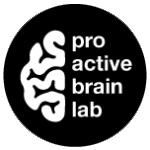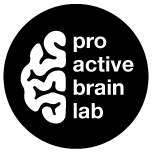Cognitive neuroscience studies (EEG, eye-tracking, VR) of visual working memory, anticipation, and attention

Website Proactive Brain Lab
Dr. Freek van Ede – Principal Investigator – freek.van.ede@vu.nl
Cognitive Neuroscience, Electrophysiology, and Eye-tracking, with topics including:
- Attentional selection of mental representations (in visual working memory)
- Anticipation (in space and time) and anticipatory neural activity
- Inter-relations between perception, working memory, and action
- Nature and functional relevance of brain oscillations (EEG)
- Nature and functional relevance of microsaccades (eye-tracking)
- Cognition in immersive and dynamic environments (VR)
- Links between eye-movements and EEG brain activity
- Relation between working memory and long-term memory
In the Proactive Brain lab (www.proactivebrainlab.com), we investigate how the “cognitive brain” dynamically prepares for upcoming behavior – i.e., how we filter relevant from irrelevant sensations and how we subsequently retain, select, and transform sensory and motor representations in ‘mind’ in service of our (anticipated) goals.
We start from the perspective of the brain as a fundamentally dynamic, anticipating, and action-oriented organ. We mainly use non-invasive neuroimaging methodologies with high temporal resolution – such as EEG and eye-tracking – to investigate the governing principles, the inter-dependent nature, and the neural bases of these core cognitive functions in dynamic settings in healthy human volunteers. In addition, we have recently started using Virtual Reality (plus eye- and head-tracking), to better approximate cognitive functioning in everyday situations.
Projects are likely to build on our recent developments that provide exciting new ways to study, for example, the links between visual working memory and action planning (e.g., refs 1,2), the contribution of goal- and stimulus-driven influences over our inner attentional focus (e.g., ref 3), the role of the brain’s eye-movement system in guiding internal attention to mental representations (e.g., ref 4), and/or the use of VR to open new questions in the study of attention and working memory (e.g., ref 5).
Example references
- van Ede, F., & Nobre, A. C. (2023). Turning attention inside out: How working memory serves behavior. Annual Review of Psychology, 74, 137-165.
- van Ede F, Chekroud SR, Stokes MG, Nobre AC. (2019). Concurrent visual and motor selection during visual working memory guided action. Nature Neuroscience, 22, 477-483.
- van Ede F, Board AG, Nobre AC. (2020). Goal-directed and stimulus-driven selection of internal representations. Proceedings of the National Academy of Sciences, 117(39). 24590-24598.
- van Ede F, Chekroud SR, Nobre AC. (2019). Human gaze tracks attentional focusing in memorized visual space. Nature Human Behaviour, 3, 462-470.
- Draschkow, D., Nobre, A. C., & van Ede, F. (2022). Multiple spatial frames for immersive working memory. Nature Human Behaviour, 6(4), 536-544.
Projects are ideal for Master students with a keen interest in Cognitive Neuroscience and who wish to develop their advanced practical research skills involving EEG and/or eye-tracking acquisition and analysis. At least some proficiency in programming and/or data analysis in Matlab/Python/R is expected.
If you wish to inquire and brainstorm about concrete possibilities, please do get in touch with me (freek.van.ede@vu.nl) or with any member of the Proactive Brain Lab.
To apply for this job email your details to freek.van.ede@vu.nl
